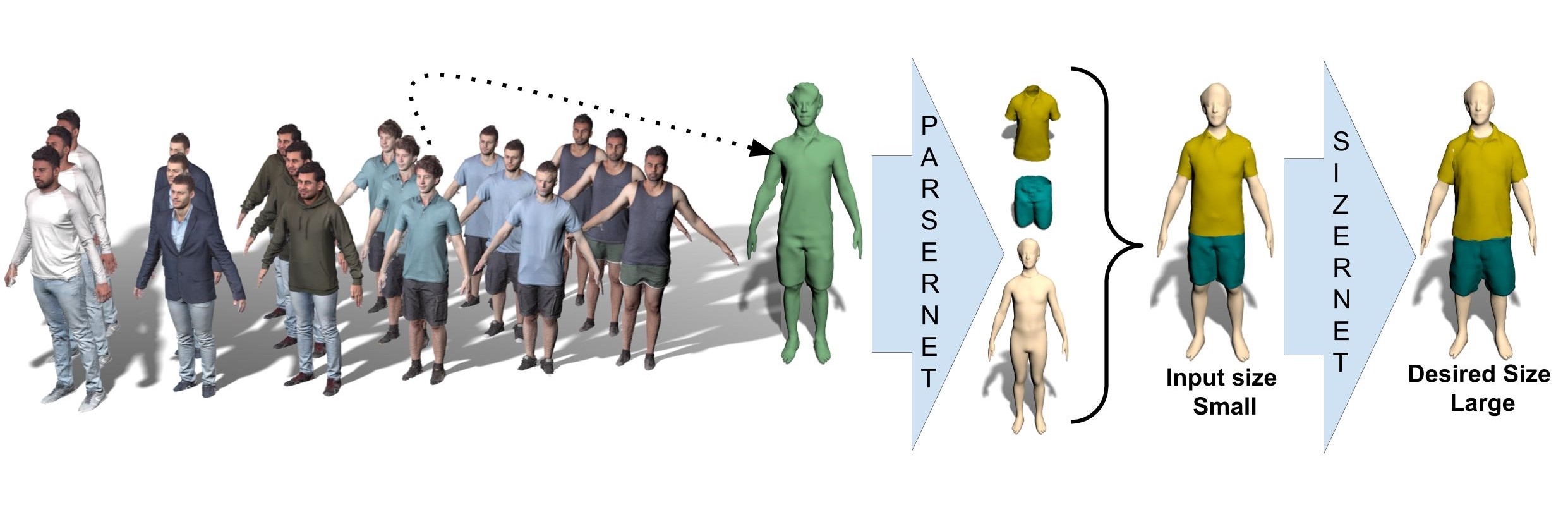SIZER: A Dataset and Model for Parsing 3D Clothing and Learning Size Sensitive 3D Clothing
Garvita Tiwari1, Bharat Lal Bhatnagar1, Tony Tung2, Gerard Pons-Moll11 Max Planck Institute for Informatics, Saarland Informatics Campus, Germany 2Facebook Reality Labs, Sausalito, USA
ECCV 2020 (Oral)

Abstract
While models of 3D clothing learned from real data exist, no method can predict clothing deformation as a function of garment size. In this paper, we introduce SizerNet to predict 3D clothing conditioned on human body shape and garment size parameters, and ParserNet to infer garment meshes and shape under clothing with personal details in a single pass from an input mesh. SizerNet allows to estimate and visualize the dressing effect of a garment in various sizes, and ParserNet allows to edit clothing of an input mesh directly, removing the need for scan segmentation, which is a challenging problem in itself. To learn these models, we introduce the SIZER dataset of clothing size variation which includes 100 different subjects wearing casual clothing items in various sizes, totaling to approximately 2000 scans. This dataset includes the scans, registrations to the SMPL model, scans segmented in clothing parts, garment category and size labels. Our experiments show better parsing accuracy and size prediction than baseline methods trained on SIZER. The code, model and dataset will be released for research purposes.
Citation
@inproceedings{tiwari20sizer,
title = {SIZER: A Dataset and Model for Parsing 3D Clothing and Learning Size Sensitive 3D Clothing},
author = {Tiwari, Garvita and Bhatnagar, Bharat Lal and Tung, Tony and Pons-Moll, Gerard},
booktitle = {European Conference on Computer Vision ({ECCV})},
month = {August},
organization = {{Springer}},
year = {2020},
}